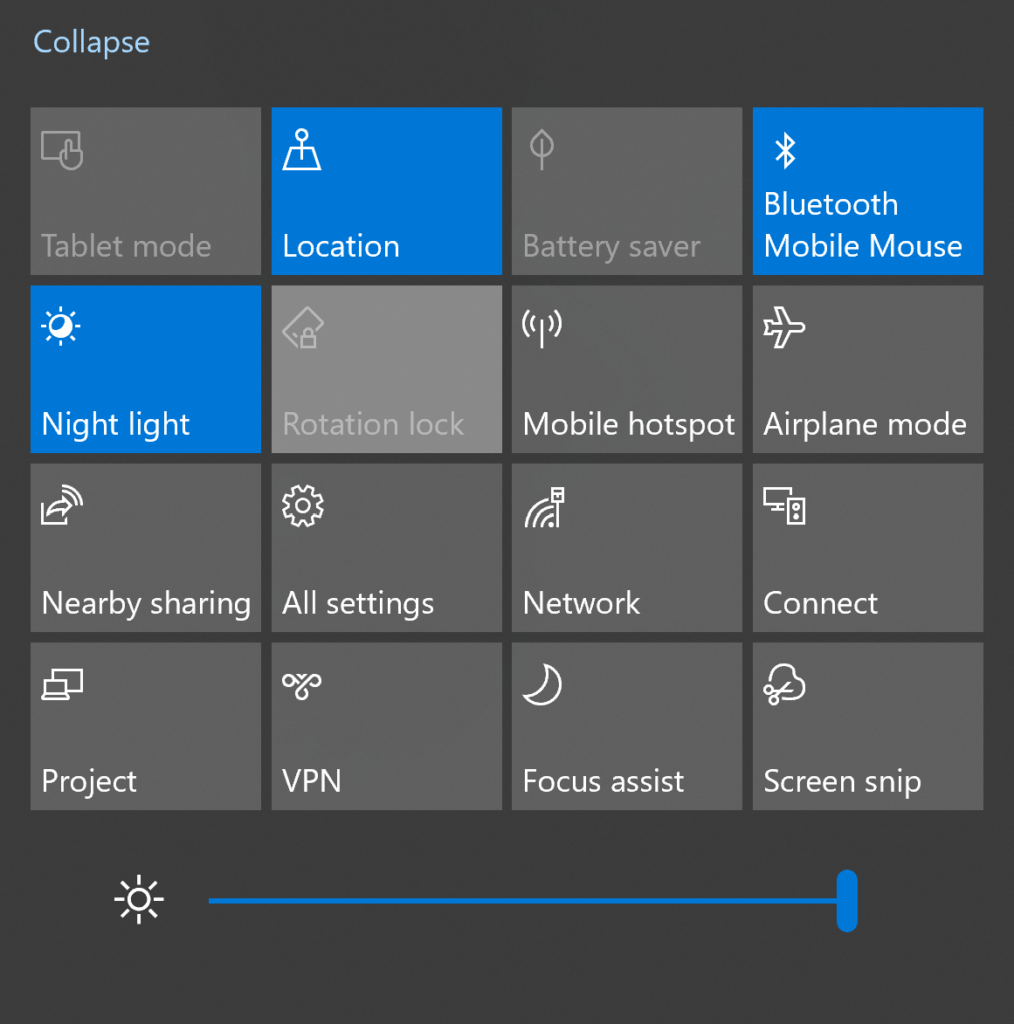

- #Display brightness how to#
- #Display brightness android#
- #Display brightness Pc#
- #Display brightness windows 8#
Tip #1: Brightness increment/decrement HID usages only operate only on Mobile systems (battery powered) and require Windows 8. Hardware should only send an input report when button is pressed down and another when the key is released. Hardware should not keep resending the usage when these keys are kept depressed by user.
#Display brightness Pc#
The following section provides sample report descriptors that PC Manufacturers must leverage. Note These HID usages operate only on mobile systems (battery powered) and require Windows 8.
#Display brightness windows 8#
Windows 8 supports the HID usages listed in the following table: Usage ID Change brightness via Windows 10s Action Center and sliding the brightness slider left or right. Windows 8 provides support for screen brightness increase/decrease as part of the consumer controls top level collection. This solution is described in the HID committee's recently approved HID Review Request 41.

Go to Control Panel > Hardware and Sound > Power Options. Adjust the slider to get your desired brightness. Go to Start > Settings > System > Display > Change brightness.
#Display brightness how to#
Because orange is opposite of blue on the color wheel, orange light can counteract blue light.Starting with Windows 8, a standardized solution has been added to allow keyboards (external or embedded on laptops), to control a laptop’s or tablet’s screen brightness through HID. There are two ways on how to change the screen brightness in a Windows 10 computer. By making the screen slightly yellow-orange, you can supposedly save your eyes from undue strain caused by blue light. Night Shift is akin to wrapping your iPhone screen in a pair of blue light-blocking glasses. Have you been playing around in your phone settings, haphazardly changing things to see what happens? If so, you’ve probably switched on Night Shift, which isn’t a default setting. 📲 On Android: Settings > Battery and device care > Battery > Toggle the switch off next to Power saving mode. Add Low Power Mode to your Control Center for easy on/off access. Or, go to Settings > Control Center > Customize Controls. 📲 On iOS: Settings > Battery > Toggle the slider for Low Power Mode to the off position.

#Display brightness android#
Most Android phones have a similar auto brightness feature. You can switch it back on to reset the auto-brightness settings, if desired. 📲 On iOS: Settings > Accessibility > Display & Text Size > Turn off auto-brightness. So if it’s bright outside, the slider should move up to create a bright screen, and if you’re in a dark bedroom, the slider should move down to dim it.Įven though auto brightness is on by default, it’s pretty easy to switch it off or reset it-and your eyes will thank you. You can see this in action if you keep your eyes on the brightness slider, which will move according to those light conditions. Apple says its iOS devices use an ambient light sensor to automatically adjust brightness levels based on the light conditions in your surroundings.


 0 kommentar(er)
0 kommentar(er)
